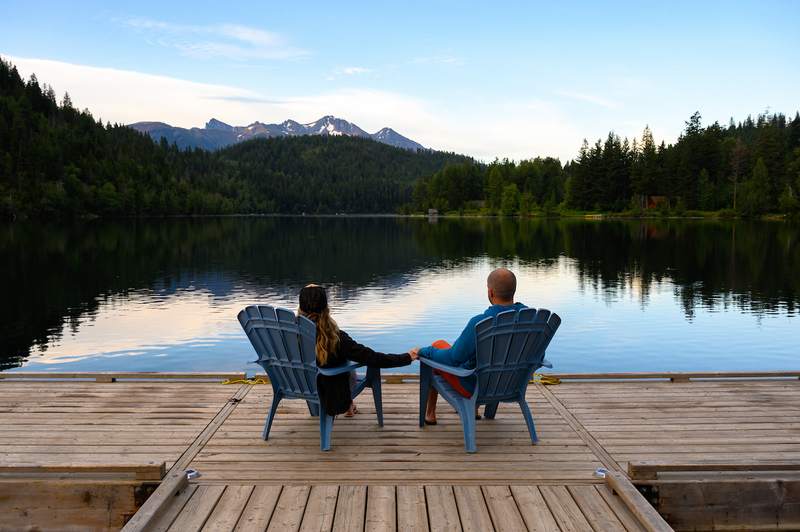A home is a major investment that you need to insure against financial loss. It’s in your best interest to purchase homeowners insurance, and most lenders will require it when you take out a loan.
“For most people, your home is the largest purchase you will ever make,” says Brandon Tritten, an insurance agent and partner at JBLB Insurance Group in Platte City, Missouri.
Homeowners insurance covers damage to your home, the theft or destruction of your belongings, and liability for injuries or property damage caused to others. However, there are limits to what homeowners insurance will cover.
Here’s what you need to know about how it works, and how to choose a homeowners insurance policy that fits your personal situation.
Key Takeaways:
- Homeowners insurance has various levels of coverage, such as the actual cash value of your home and belongings or the replacement cost.
- Homeowners insurance typically doesn’t cover damage from disasters such as floods and earthquakes. Those are separate policies.
- The steps to purchasing homeowners insurance start with deciding how you want to be covered and end with finalizing policy details.
Homeowners Insurance Explained
Homeowners insurance covers the cost of property damage or loss caused by accidents, some disasters, or theft — all of which can be expensive to recover from. Homeowners insurance policies also typically offer liability protection, which covers you against lawsuits for any injuries or damage to someone else or their property caused by you, your family members, or your pets.
The basic idea of homeowners insurance is simple: You pay a premium in exchange for coverage. Your mortgage lender may collect and pay the insurance premiums on your behalf through an escrow account. If a loss occurs, your deductible is how much you must pay out of pocket before the insurance plan starts to pay.
Do you need homeowners insurance?
Homeowners insurance isn’t mandated by law, but your mortgage lender will most likely require you to purchase it. Lenders often require homeowners insurance to protect its investment if your home is damaged or destroyed.
While it may not be legally required, homeowners insurance is important for all property owners to have. Homeowners insurance protects you from financial ruin if a catastrophe like a house fire causes hundreds of thousands of dollars in damage — but only if you have the right type of coverage and limits.
When should you buy homeowners insurance?
If you’re planning to apply for a mortgage, then you also should be ready to purchase a homeowners insurance policy. Your lender will typically require proof of homeowners insurance before you can close on the house and loan.
As part of your closing costs, you’ll likely be required to pay upfront for the first year of homeowners insurance.
What Does Homeowners Insurance Cover?
Here’s a breakdown of the different types of coverage offered by a standard homeowners insurance policy:
Homeowners Insurance Coverage Explained
| Covered Area | What Homeowners Insurance Does | Typical Coverage Amount |
| Dwelling | The policy pays to repair or rebuild your home if it’s damaged or destroyed from an insured disaster. | The Insurance Information Institute recommends purchasing enough insurance to cover the cost of rebuilding your home. |
| Personal property | The policy covers clothes, furniture, and other personal items if they are stolen or destroyed by an insured disaster. Coverage for expensive items like jewelry and art comes with limits. | Generally, the coverage is 50% to 70% of the insurance on the home’s structure. |
| Liability | If you, your family members, or your pets cause bodily injuries or damage to someone else or their property, this coverage pays for their legal bills and any court awards. | Limits typically begin at $100,000, but homeowners are recommended to buy at least $300,000 to $500,000 in liability insurance, according to the Insurance Information Institute. |
| Medical payments to others | If a guest is injured on your property, or if a pet you own injures them — even when it happens away from home — this coverage would pay for their medical bills. | The limit is usually set between $1,000 and $5,000. |
| Additional living expenses | It might not be possible to live in your home after a disaster. If your policy covers the disaster, this coverage reimburses you for hotel stays, restaurant bills, and other costs during the rebuilding phase — including any revenue lost if you rent out your house. | Exact details vary depending on the insurer, but many policies provide coverage for approximately 20% of the insurance on the home’s structure. |
| Other structures | This coverage pays to repair or replace structures that are detached from your home, such as a garage or gazebo. | Coverage for other structures is generally 10% of your dwelling limit. |
When it comes to reimbursement, there are different levels of coverage: actual cash value, replacement cost, extended replacement cost, and guaranteed replacement cost.
Actual cash value
Choosing the actual cash value of your home and personal belongings as your coverage option means that depreciation will be deducted when you need to make a claim. After accounting for depreciation, it’s unlikely you’ll be able to cover the full cost of replacing the item.
Replacement cost
When you select the replacement cost of your home and possessions as your coverage option, you won’t need to worry about depreciation. You can expect a payout that covers the cost of rebuilding or repairing your home, or replacing your items, up to your coverage limit.
Extended replacement cost
This type of policy pays a certain percentage over your coverage limit if additional funds are needed to rebuild or repair your home. It’s typically 20% to 25% more than the limit.
Guaranteed replacement cost
This policy pays the full cost of repairing or building your home — even if it exceeds your coverage limit. An extended or guaranteed replacement cost policy can be useful if rebuilding turns out to be more costly than expected, but keep in mind that these policies aren’t available everywhere.
What Is Not Covered By Homeowners Insurance?
While a standard homeowners insurance policy can protect you financially from many different disasters, there are certain situations that aren’t covered. These exclusions include:
- Flooding and earthquakes.
- Maintenance-related problems.
- Power failure.
- Termites.
- Pollution.
- Nuclear hazards.
- War.
- Enforcement of building codes.
- Intentional acts.
If you want additional coverage, flood insurance is provided by the federal government’s National Flood Insurance Program, while earthquake coverage is available as an addition to your homeowners insurance policy, or as a separate policy.
Types of Homeowners Insurance Policies
Homeowners insurance policies differ based on the perils you’re protected against, and the amount you can be reimbursed for. Certain policies are designed for specific types of homes.
Most common: HO3 insurance
HO3 insurance is the most popular type of homeowners insurance policy, and it includes a broad range of coverage. In addition to liability protection, HO3 insurance covers the structure of your home and your personal belongings against many different disasters, including:
- Fire or lightning.
- Explosions.
- Smoke.
- Wind or hail.
- Snow, ice, or sleet weight.
- Falling objects.
- Theft.
- Vandalism.
- Damage from vehicles.
- Damage from planes.
- Freezing of household appliances or air-conditioning, heating, plumbing, or fire sprinkler systems.
- Accidental overflow or discharge of water or steam from a household appliance or system.
- Accidental and sudden bulging, burning, cracking, or tearing apart of an air-conditioning, hot-water heating, or fire sprinkler system.
- Accidental and sudden damage from an artificially generated electrical current.
- Civil commotion or riots.
- Volcanic eruptions.
HO3 coverage is also known as the “special form.” It insures your home against all perils unless they are specifically listed as not covered by your policy.
Most extensive coverage: HO5 insurance
HO5 policies offer the most comprehensive coverage of all the different types of homeowners insurance. Losses are reimbursed based on the replacement cost as opposed to the actual cash value.
Unlike HO3 insurance, which lists the perils you are covered from, HO5 coverage operates on a “open perils” basis.
That means it covers:
- Everything HO3 policies cover.
- Anything not specifically excluded in the policy documents.
- Replacement cost of belongings rather than actual cash value.
Typical exclusions include:
- Damage from earth movements.
- Water damage from seepage or sewer backup.
- Nuclear hazard.
- War.
- Government action.
- Collapse.
- Theft if the home is under construction.
- Vandalism if the home has been vacant for a long time.
The downside is HO5 insurance isn’t as widely available as HO3 insurance. HO5 policies are more common in low-risk areas with newer homes.
Least extensive coverage: HO1 and HO2 insurance
The HO1 is a basic homeowners insurance policy that is “bare bones,” according to the Insurance Information Institute, and difficult to find. The policy isn’t available in most states, and it includes only some of the disasters covered by HO3 insurance.
The HO2 offers limited coverage compared with HO3 insurance and is sometimes known as the “broad form.” It only covers perils that are specifically named in the policy, so if your home is damaged due to a different event, then you’re on the hook for repairs.
Other policy types
Here’s an explanation of other home insurance policies:
- HO4 insurance: This policy is intended for renters to cover their personal belongings against the same perils as HO3 insurance. HO4 insurance also includes liability protection.
- HO6 insurance: The HO6 is for owners of condominiums or co-op units, and covers their personal belongings and any structural parts of the building that they own. It also covers personal liability.
- HO7 insurance: This policy protects owners of mobile homes or manufactured homes.
- HO8 insurance: The HO8 is designed for older homes and reimburses homeowners based on actual cash value.
Where Can You Buy Homeowners Insurance?
You can buy homeowners insurance from a few different sources.
One option is to work with an insurance agent. Agents are professional insurance salespeople who can help you learn about insurance, compare policies, and select the best one for your situation. Some agents work for specific insurers, while others can help you compare offers from multiple providers.
You can also go to a specific insurer directly. If you already have other policies, such as car insurance, you may be able to get a discount by buying multiple policies from the same company.
There are also websites that will help you compare insurance options from multiple providers.
Tips for Purchasing Homeowners Insurance
Here are some tips to help you navigate how to shop for home insurance:
- Research and compare insurers. If you’re not sure where to begin, ask your real estate agent or mortgage broker for referrals. You could also browse the customer satisfaction ranking from J.D. Power. Once you have a small list of reputable companies to choose from, you can search for any complaints through the National Association of Insurance Commissioners.
- Avoid a bare-bones policy. It’s understandable that you might want to save money where you can. But if disaster strikes and you don’t have enough coverage, it could end up costing you far more than your premiums. Be sure you have enough coverage to repair or rebuild your home and replace any expensive possessions.
- Carefully read and review your policy. Read all the fine print to make sure you understand what is and isn’t covered, as well as how you need to document your belongings.
- Document your belongings on video. When you take stock of your belongings for an inventory check, record everything to make sure you have evidence in case you need to file a claim.
- Periodically review your policy. Check your coverage regularly to make sure you are still protected for major hazards and have enough coverage to pay for repairs.
What To Look For in Homeowners Insurance
Unless you have a guaranteed replacement cost policy, your homeowners insurance comes with a coverage limit. So, when you’re choosing a policy, you want to make sure that you’re adequately protected.
Here are some factors to consider:
- The cost of fully rebuilding. In the worst-case scenario, your home could be destroyed. That’s why your homeowners insurance policy should be able to cover the cost of rebuilding your home. For an estimate of how much insurance is needed, the Insurance Information Institute recommends multiplying the square footage of your home by the building cost per square foot in your area. Your real estate agent or insurance agent can help you find this construction cost.
- The value of your personal belongings. The III recommends conducting an inventory of your possessions, as well as any expensive items you own. Certain valuable items, like jewelry, come with specific coverage limits. If they seem too low, you can purchase additional coverage to insure these items as a collection or on an individual basis, with much higher limits.
- How much liability protection you need. According to the III, you should have enough liability coverage to protect your assets. This typically means purchasing at least $300,000 to $500,000 worth of insurance.
- Your deductible. In a typical homeowners insurance claim, your deductible is a fixed dollar amount that you must pay before your coverage kicks in. Homeowners generally choose a deductible between $500 and $2,000. However, you may have a percentage deductible for certain claims, such as hail, hurricane, and wind damage. In these claims, you pay a percentage of your home’s insured value.
Step-by-Step Guide to Buying Homeowners Insurance
If you’re in the market to purchase a homeowners insurance policy, follow these steps.
1. Decide what you want covered
The first thing you should do is decide what you need to protect yourself from, and what items you want to cover. Homeowners policies may exclude specific perils, such as floods or earthquakes. You can work with your insurer to include those coverages or to buy separate policies.
You also must work with your insurer to make sure different belongings are covered. For example, you might need to get specific additions to your policy to protect collectibles, jewelry, or other items.
Think about what risks are common in your area, and whether you’d need help to replace certain items that could get damaged.
2. Determine how much insurance you need
Next, decide on the amount of insurance you need to purchase. Many insurers recommend insuring your property for at least 100% of its estimated replacement cost. That means that you should buy enough coverage to fully rebuild your home if it’s rendered unusable by damage. An agent may be able to help you estimate this cost.
For example, if it’d cost $400,000 to rebuild your home, you’ll want at least that much coverage.
Don’t forget to consider other coverages in your policy, such as loss of use. Think about the cost to live in temporary housing, an apartment, or a hotel while your home is getting fixed up. Buy enough coverage to help pay for that.
Depending on where you live, it can take months to get paid for a claim, so be sure to have enough coverage for at least three to six months’ worth of living expenses while you get your claim processed and start the repair process.
3. Choose a homeowners insurance provider
Next, it’s time to choose an insurance company.
A good place to start is the company you use for other insurance policies. Many offer bundling discounts that can help you save money on multiple types of coverage.
Still, it’s a good idea to get quotes from multiple insurers, even if you do have the option to bundle. You can compare these quotes to get the best deal.
Also, make sure to choose a reputable insurer that isn’t going to run into financial issues.
4. Choose a homeowners insurance policy
Once you’ve gotten a few different quotes, it’s time to choose your policy.
When comparing quotes, make sure you’re looking at both the cost of the policy and the amount of coverage it provides. For example, a $500 policy that offers $250,000 in coverage may feel like a better deal than a policy that charges $750, but if that $750 policy offers $600,000 in coverage, it could be worth paying more.
5. Finalize policy details
When you’ve settled on a policy, talk to the insurer to finalize all the details. Ask about exclusions or other language you’re unclear about, and provide any additional documentation the insurer requires. When you’re ready, sign on the dotted line.
Average Cost of Homeowners Insurance
According to a 2022 study from the National Association of Insurance Commissioners, the average annual homeowners insurance premium in 2020 was $1,311. However, this report only tells part of the story. As you shop around for homeowners insurance, you’ll notice there’s a wide range of costs.
How will your premium be determined?
Tritten says several factors may impact your premiums. In addition to the type of policy and where you live, these factors include but aren’t limited to:
- Claim history. If you’ve made several insurance claims in the past, that could make your premiums more expensive.
- Building materials. The construction materials used in your home could impact the cost of your premiums. For example, sturdier materials can help keep costs low.
- Credit-based insurance score. If qualified, you could get a lower premium with a higher insurance score. However, the reverse is true as well. You might have to pay a higher premium if your score is on the lower end.
- Neighborhood crime rate. Areas at higher risk for crimes like theft or vandalism see higher premiums.
- Risk of accidents happening. Areas more prone to covered perils, or homes that have risk factors like unevenly graded land could see higher premiums.
- Age and condition of your home. This includes your roof and major systems, such as those for electricity, plumbing, heating, and air conditioning.
- Fire protection class. If you live in a rural area, there may be slower response times from your local fire department.
- Whether you have an existing homeowners insurance policy. Insurers want to know how long you’ve been with the company.
Ways To Save On Homeowners Insurance
When you’re shopping for homeowners insurance, you may be eager to slash your premiums. But often, cheaper isn’t better. The underlying coverage and limits are important.
Instead of skimping on coverage, Tritten suggests bundling your insurance policies for a discount. For example, you could choose the same insurer for your home and auto insurance policies.
Many insurers also offer discounts if you install certain safety features in your home, such as a burglar alarm, deadbolts, and a sprinkler system.
Another way to reduce your homeowners insurance premium is by raising your deductible — without changing the underlying coverage. Increasing your deductible from $500 to $1,000 could help you save up to 25% on your premiums, according to the Insurance Information Institute.
“The higher the deductible, the lower the premium,” Tritten says. “Don’t increase the deductible if you can’t afford it, though.”
Other ways to save include:
- New customer discount. Insurers may offer a discount to new customers to attract your business.
- First-time homebuyers discount. Some insurers offer discounts to first-time homebuyers.
- Weatherproofing your home. If you add weatherproofing, it reduces the odds of damage to the interior of your home, which could make your policy cheaper.
- Keeping up with repairs. Older homes that are in poor shape pose more risk in terms of accidents and injuries. Maintaining your home properly can help you keep premiums low.
Homeowners Insurance FAQ
Insurance is a complicated topic. As you shop for a policy, it’s important to make sure you understand the ins and outs of how homeowners insurance works.
No, shopping for homeowners insurance won’t impact your credit. Insurers will check your credit when giving you a quote, but these credit checks are soft pulls that won’t damage your credit score.
Almost every mortgage lender mandates that you carry homeowners insurance. Once you pay off the mortgage, there’s no legal obligation to maintain a policy. However, it’s a good idea to make sure you always have homeowners insurance.
Some common mistakes that people make when buying home insurance include:
— Buying too little coverage.
— Getting a bare-bones policy and not covering against important risks and perils.
— Choosing too low of a deductible and winding up with a high premium.
— Not getting additional coverage, like flood or earthquake insurance, in high-risk areas.
— Not telling the insurer about life changes like getting a dog or remodeling the home.
— Not documenting possessions.
The cost of homeowners insurance may be included in your closing costs. Most lenders require that you buy insurance before getting a mortgage, and may make you submit the first payment as part of closing.
The Bottom Line on Homeowners Insurance
If you’re buying a home, then you need homeowners insurance. A standard homeowners insurance policy covers your home and possessions, with limits, in the event of theft or certain disasters. It also includes liability protection in case you’re sued for bodily injuries or property damage. So, it’s important to purchase enough coverage to protect yourself financially.
In the best-case scenario, you won’t ever be in a situation where you need to make a homeowners insurance claim. If disaster strikes, however, you’ll likely be grateful for the coverage.
Kate Dore and T.J. Porter contributed to the reporting of this article.






